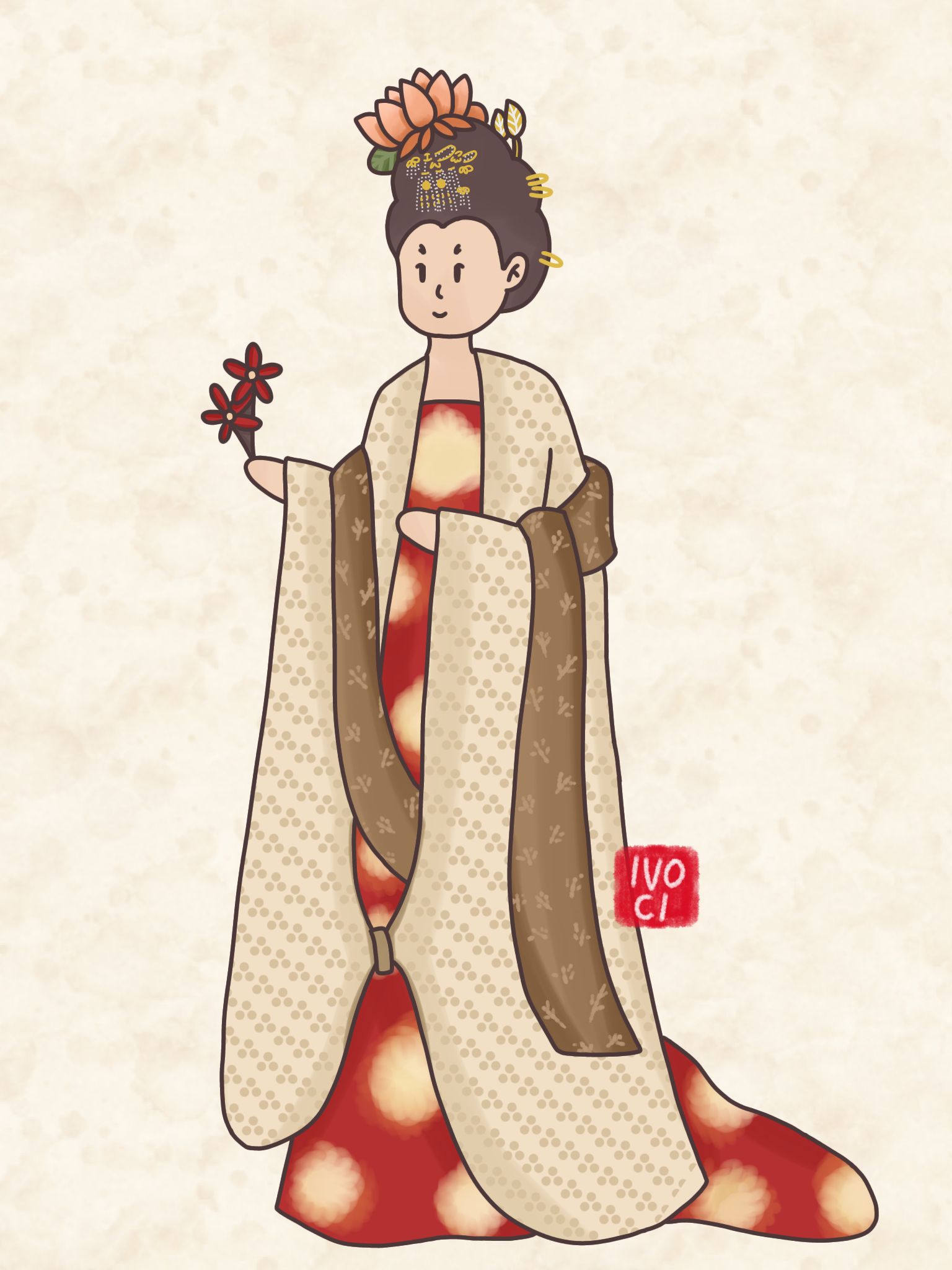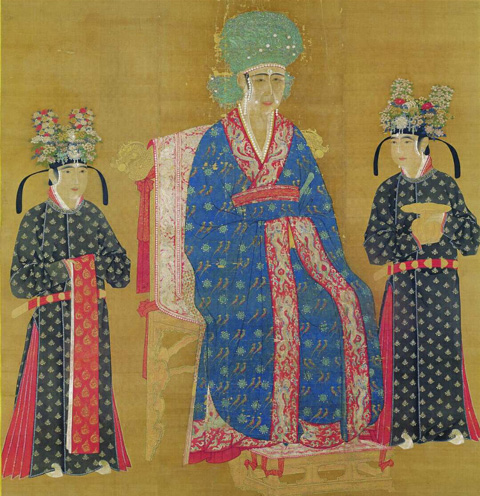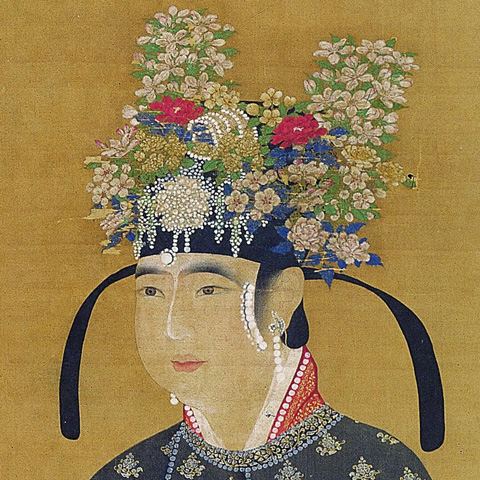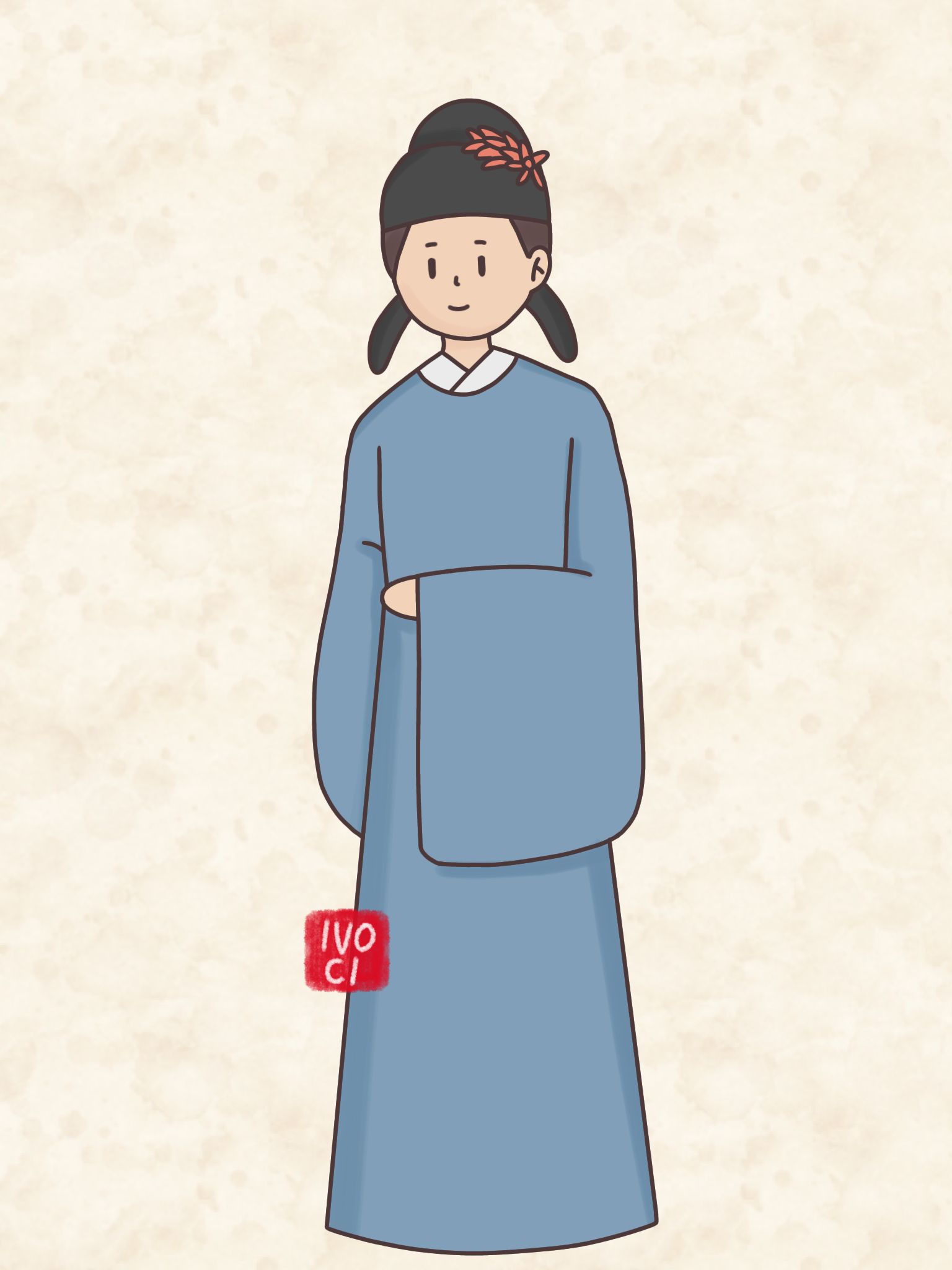In ancient China, women’s headwear was very diverse. In addition to gold and silver jewelry, flowers were also often used as accessories.
In the Song dynasty, from the court down to the folk, both men and women loved flower hairpins.
The Origin of the Flower Hairpin
The earliest record of the custom of attaching flowers comes from the period of Emperor Gaozu of Han, where Lu Jia wrote in “Nan Yue Xing Ji” that women in the Lingnan region liked to wear jasmine flowers as hairpins.
During the Sui, Tang, and Five Dynasties periods, flower hairpins were very popular in the Central Plains. At that time, society was open, and there were all kinds of clothes and accessories, including flower hairpins.
In the painting “Court Ladies Adorning Their Hair with Flowers”, it can be seen that the women pinned peonies, lotuses, hydrangeas, and other flowers in their hair.
The Tang dynasty also featured men wearing flower hairpins, and the emperor often bestowed officials and scholars with flowers.
In the Song dynasty, the custom of flower hairpins was further developed, not only in the palace but also widespread among the civilian population.
Flower Hairpin in the Palace
The Song dynasty court ladies had various styles of flower hairpins, and different flowers were made into flower crowns or flower hats to wear.
There is a crown with real flowers and a crown with artificial flowers.
Take futou with hat wings as the base, decorated with flowers made of silk, or colored paper, usually in the shape of peaches, peonies, chrysanthemums, camellias, and other flowers.
The maid in the “Seated Portrait of Empress Song Renzong” is wearing this kind of flower crown/hat.
There is a very famous Song dynasty story about a flower hairpin. In the Northern Song dynasty, polymath scholar and statesman Shen Kuo recorded the story of “four chancellors & four hairpin flowers” in “Dream Pool Essays”.
In 1045, Han Qi was the governor of Yangzhou. In his garden at the government office, there was a beautiful Paeonia lactiflora, which had four flowers on one branch. This type of flower has red petals at the top and bottom, and a golden pistil circle in the middle.
Back then, Han Qi had invited his colleagues in the Court of Judiciary and Revision, Wang Gui, Wang Anshi, and Chen Shengzhi, to gather. While drinking wine and enjoying the flowers, Han Qi cut these four flowers and gave one each to the three men.
In the following thirty years, the four people who participated in flower viewing became prime ministers one after another. This is the famous story of “four chancellors & four flower hairpins”.
In the Southern Song dynasty, the court system of flower hairpins developed more standardly. The color and number of flowers bestowed by the emperor varied according to the official rank.
In important ceremonies related to the imperial family, flower hairpins became a ritual, and gradually became more complicated.
Folk Flower Hairpin
Under the influence of court aesthetics, the flower hairpin phenomenon also became popular among the people.
In the middle to late Northern Song dynasty, flower hairpins became popular among men, women, and children. People wear flowers at various festivals and events.
Due to the different flowering periods of various plants, people wear different flowers at different times of the year.
Plum blossoms at the Lantern Festival, spiraea thunbergia in early spring, jasmine at the Dragon Boat Festival, and chrysanthemums at the Chrysanthemum Festival.
Folk women also popularly wore flower crowns, which was also the birthplace of flower crown shops, and craftsmen specializing in repairing crowns.
During the Yuan and Ming dynasties, the popularity of flower hairpins gradually declined and it was no longer popular during major festivals and ceremonies.
In the Qing dynasty, there were documented cases of flower hairpins at the palace and for courtiers, and men stopped wearing flowers, but there were still certain areas or groups of people who retain the custom of flower hairpins.






Leave a Reply